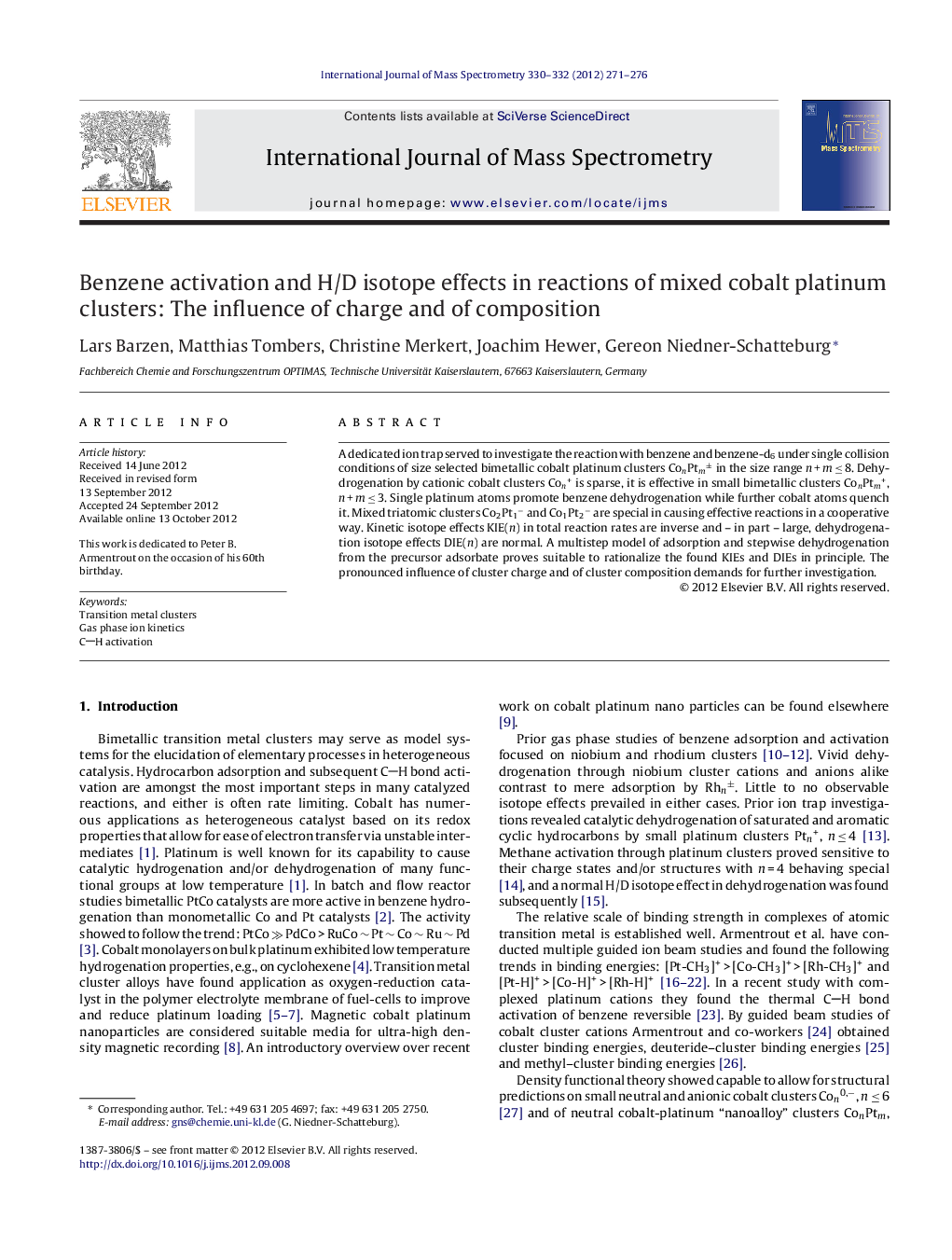| Article ID | Journal | Published Year | Pages | File Type |
|---|---|---|---|---|
| 1194255 | International Journal of Mass Spectrometry | 2012 | 6 Pages |
A dedicated ion trap served to investigate the reaction with benzene and benzene-d6 under single collision conditions of size selected bimetallic cobalt platinum clusters ConPtm±ConPtm± in the size range n + m ≤ 8. Dehydrogenation by cationic cobalt clusters Con+ is sparse, it is effective in small bimetallic clusters ConPtm+, n + m ≤ 3. Single platinum atoms promote benzene dehydrogenation while further cobalt atoms quench it. Mixed triatomic clusters Co2Pt1− and Co1Pt2− are special in causing effective reactions in a cooperative way. Kinetic isotope effects KIE(n) in total reaction rates are inverse and – in part – large, dehydrogenation isotope effects DIE(n) are normal. A multistep model of adsorption and stepwise dehydrogenation from the precursor adsorbate proves suitable to rationalize the found KIEs and DIEs in principle. The pronounced influence of cluster charge and of cluster composition demands for further investigation.
Graphical abstract.Figure optionsDownload full-size imageDownload high-quality image (78 K)Download as PowerPoint slideHighlights► Small ionic cobalt–platinum clusters dehydrogenate benzene. ► Platinum atoms promote dehydrogenation, cobalt atoms quench it. ► Mixed triatomic clusters Co2Pt− and CoPt2− show cooperative reactivity. ► Inverse kinetic H/D isotope effects prevail.
